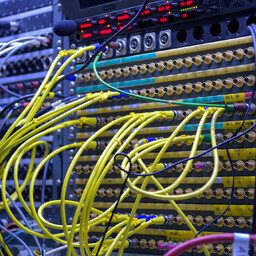We are taking a completely new approach here to prevent the misuse of taxpayer money," Pakosta said on Wednesday to ERR.
The draft regulation sent by her for approval foresees that the state will no longer pay for cable connections to random address objects. Previously, criticism has been voiced that money was given to internet companies even when the cable bypassed a rabbit hutch or an abandoned hay barn. Now the state wants to obtain actual connection agreements from the cable provider," emphasized Pakosta.
She added that in previous rounds there have been cases where real connections were made to only a quarter of the indicated addresses. According to Pakosta, in previous subsidy rounds, companies that built networks may have had an interest in fewer connections because then they wouldn't have to ensure its functionality.
While previously the state based the granting of subsidies on two criteria - the number of addresses that could potentially be connected and the amount of subsidy requested per address - the new requirement will also take into account the number of connected addresses, as stated in the draft regulation.
In this round, the state plans to withhold 30 percent of the subsidy if the promised connections do not materialize, the minister explained. Pakosta also emphasized that under the new measure, obtaining a broadband connection should not cost any subscriber more than 200 euros.
In the fifth stage of broadband construction planned for 2025-2029, telecom companies or companies owned by local governments can apply for support under peak conditions for building an access network with a fixed connection allowing a download speed of 1 Gbit/s, if it is not planned to build it by 2029 with private investment.
The access network (so-called last mile) is the part of the network that extends from the backbone network to the end users, which can be both homes and businesses and institutions. The cable to be built must be operator-neutral - meaning that a person or company can choose whose internet and telecommunication services they will use later.
With this measure, the state plans to create connection opportunities for at least 10,000 addresses. The subsidy will be financed by the European Regional Development Fund with 45 million euros, and the ministry plans to conduct at least three application rounds for its distribution.
Pakosta also emphasized the volume of the current subsidy round - since 2018, the state has supported the construction of access networks in rural areas with a total amount of 51.1 million euros through four different measures.
With the previous four rounds, over 47,000 addresses have gained the possibility of connection, and work is ongoing for about 10,000 addresses. According to a study commissioned by the Ministry of Economic Affairs and Communications last year, there are still over 120,000 addresses in rural Estonia lacking at least a 100 Mbit/s fixed connection. Building fiber connections to these addresses is estimated to cost over 800 million euros.

